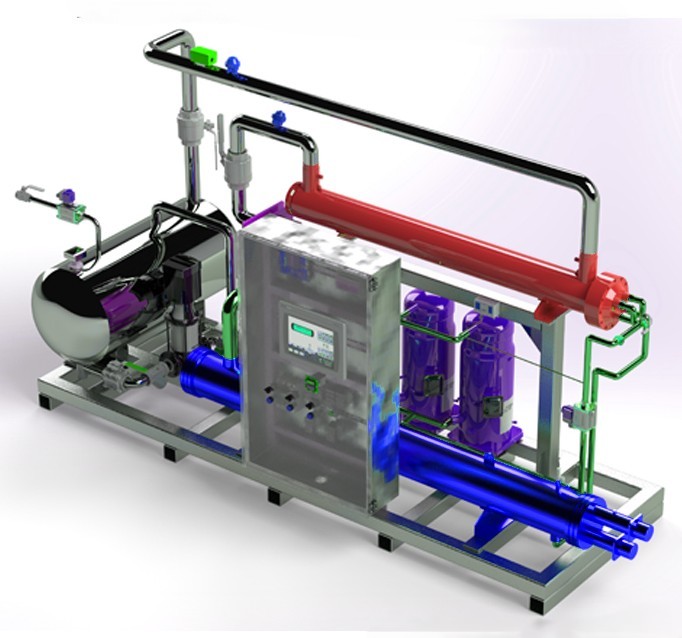Modern compressors are far more than mechanical pumps. With the convergence of smart controls, variable-speed technology, advanced materials, and eco-friendly refrigerants, compressors have transformed into intelligent, high-efficiency machines that directly influence the energy performance, operational cost, noise levels, and environmental impact of an entire HVAC system. This comprehensive guide delves deep into the types of compressors used in air-cooled chillers, explores cutting-edge technologies and engineering advancements, and highlights how these innovations are reshaping the future of cooling systems.
But at the very heart of every air-cooled chiller lies its most critical component — the compressor. Much like a human heart pumping blood through the body, the compressor drives the refrigerant throughout the chiller system, enabling the absorption and rejection of heat, and ultimately, the production of chilled water or glycol solutions. Without this component, the chiller would be inert — a silent assembly of coils and controls with no cooling capability.
The Function of a Compressor in Air-Cooled Chillers
A compressor is the heart of the refrigeration loop in an air-cooled chiller. Its primary role includes:
- Suction of low-pressure refrigerant vapor from the evaporator
- Compressing the vapor into a high-pressure, high-temperature gas
- Pushing it into the air-cooled condenser where it releases heat to the ambient air
Without this pressure differential, refrigerant circulation — and hence the cooling cycle — would halt entirely.
Comprehensive Classification of Compressors
Let’s examine the key types used in air-cooled chillers in more technical depth:
Scroll Compressors
- Operation: One scroll remains fixed while the other orbits to compress refrigerant in pockets.
- Capacity Range: Typically 2 to 100 TR
- Special Features:
- Multiple scroll compressors can be arranged in tandem for load balancing
- Excellent for modular, on/off cycling systems
- Built-in overload protection and internal pressure relief valves for safety
Screw Compressors
- Operation: Uses male and female rotors that mesh and trap refrigerant, compressing it as it moves along the rotors.
- Capacity Range: 100 to 1000+ TR
- Special Features:
- Integrated oil separation systems
- Slide valve or VFD-based capacity control (from 25% to 100%)
- Exceptional for continuous duty and large-scale process cooling
Reciprocating Compressors
- Operation: Pistons move up and down inside cylinders to compress refrigerant gas.
- Capacity Range: 5 to 200 TR
- Special Features:
- Good for short-run duty cycles
- Valve plate technology improves compression efficiency
- Often used in smaller legacy chillers or backup systems
Centrifugal Compressors (Occasionally in high-end air-cooled systems)
- Operation: High-speed impellers accelerate refrigerant and convert velocity into pressure.
- Capacity Range: 300+ TR
- Special Features:
- Oil-free magnetic bearing options
- Highest efficiency at full load applications
- Compact size relative to output in large installations
Smart Oil Management and Lubrication Advancements
Oil management is vital for compressor durability and efficiency. Today’s systems incorporate:
- Cyclonic oil separators (≥99% oil separation efficiency)
- Oil return orifice or float valves to ensure uninterrupted lubrication
- Electronic oil level sensors with auto-shutdown alarms
- Synthetic lubricants tailored to new refrigerants (e.g., POE for R-410A or R-32)
Next-Level Diagnostics and Connectivity
Modern compressors are designed for Industry 4.0 compatibility:
- Integrated IoT sensors: Real-time monitoring of discharge temp, suction pressure, motor amperage, and vibration
- Predictive maintenance software: Detects anomalies before failure
- Wireless modules: Enables remote configuration and service logging
- BMS & SCADA Compatibility: Communicates via BACnet, Modbus, or LonWorks
This intelligent control enables early warning systems and energy optimization, making compressors smarter than ever before.
Environmental Innovation: Low-GWP Compatibility
Compressors today are engineered for compatibility with low-GWP (Global Warming Potential) refrigerants such as:
- R-32
- R-454B
- R-513A
These refrigerants operate at different pressure and temperature characteristics, requiring:
- Redesigned gaskets, bearings, and oil types
- Enhanced thermal expansion valves (TXVs)
- Compliance with F-Gas regulations and ASHRAE 34 standards
By reducing environmental impact, these compressors support green building certifications like LEED and IGBC.
Noise & Vibration Control in Modern Designs
As air-cooled chillers are often installed in open environments (rooftops, courtyards), noise suppression is crucial. Compressors today include:
- Double acoustic jackets
- Floating rubber grommet mounts
- Discharge line mufflers
- Scroll and VFD compressors often operate below 60 dB(A)
This ensures compliance with urban zoning regulations and improves occupant comfort.

